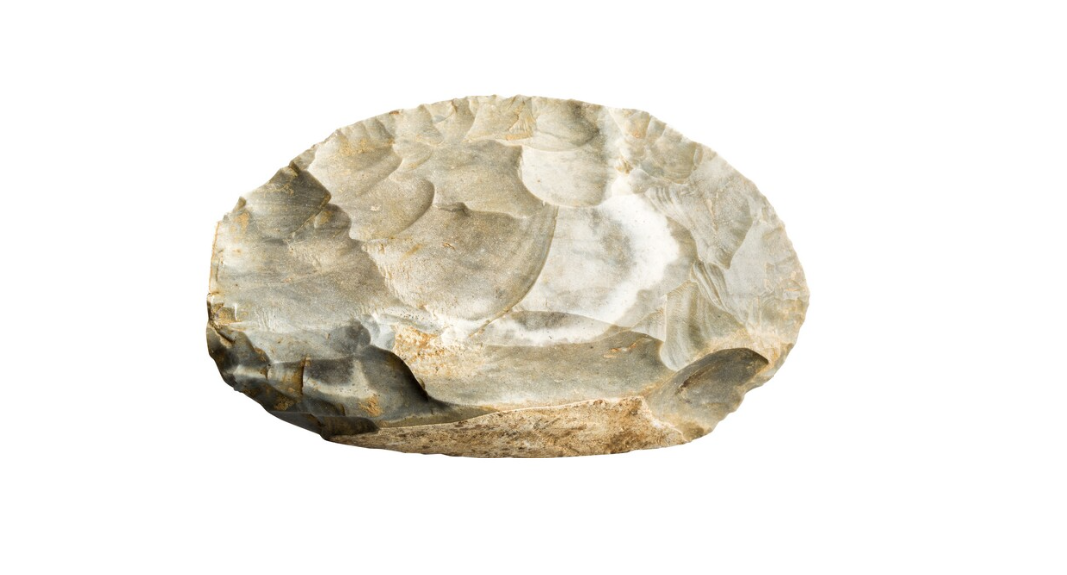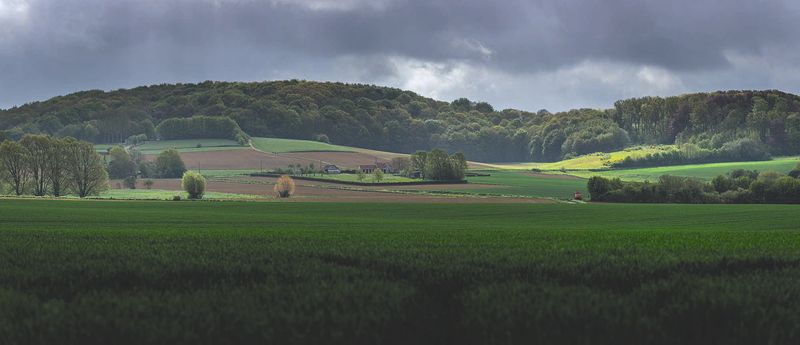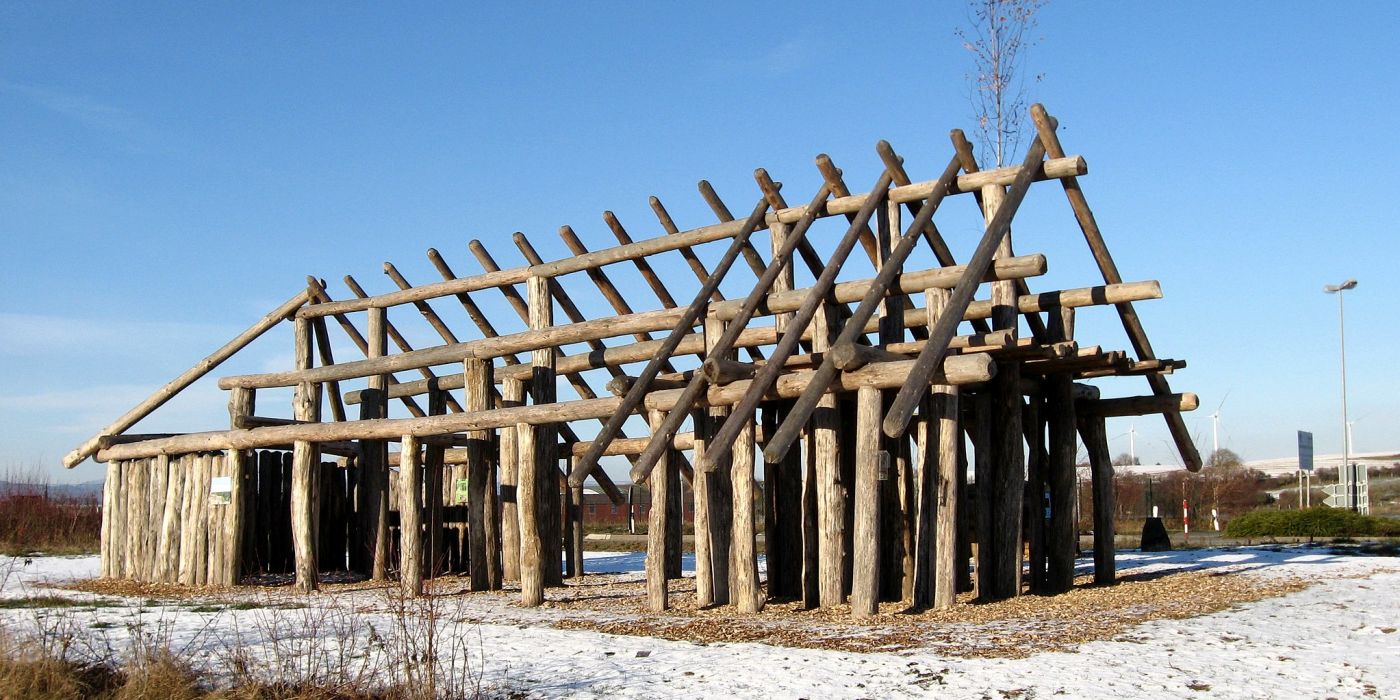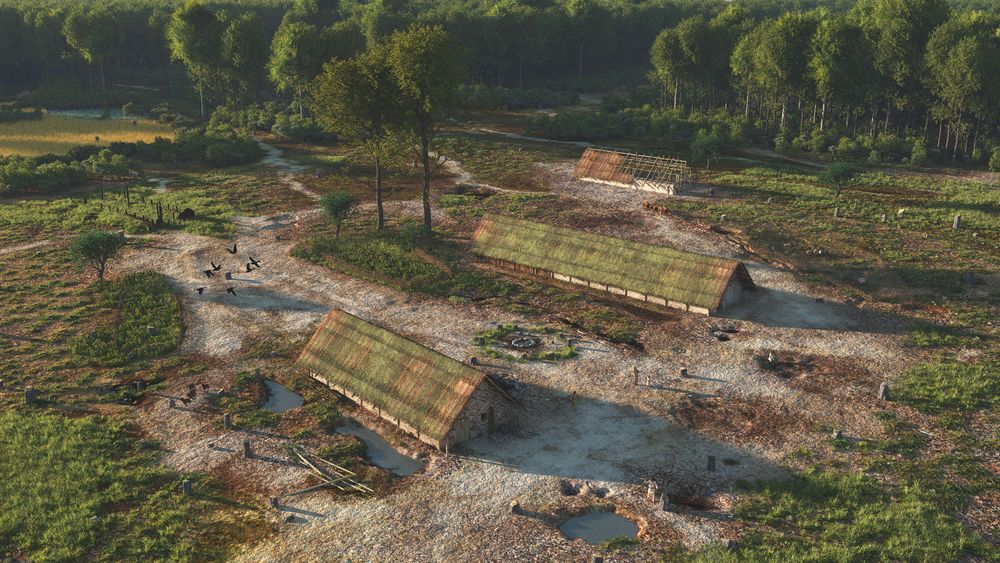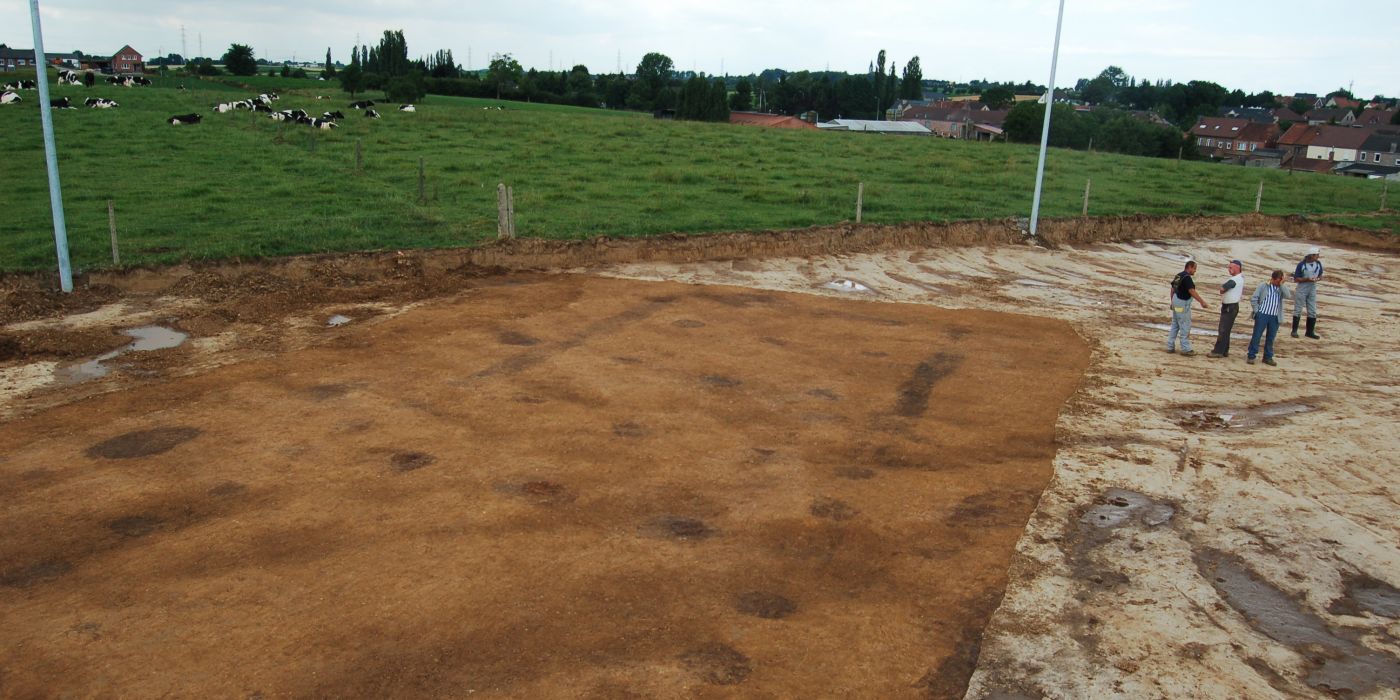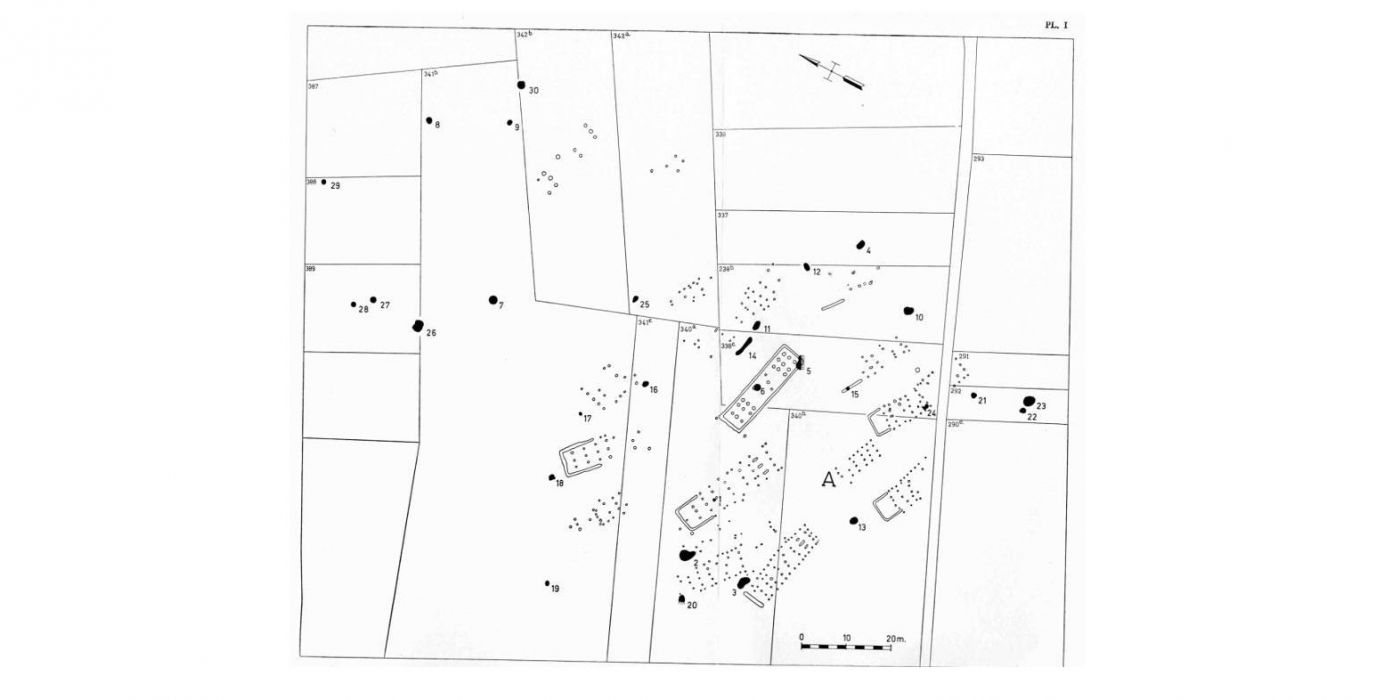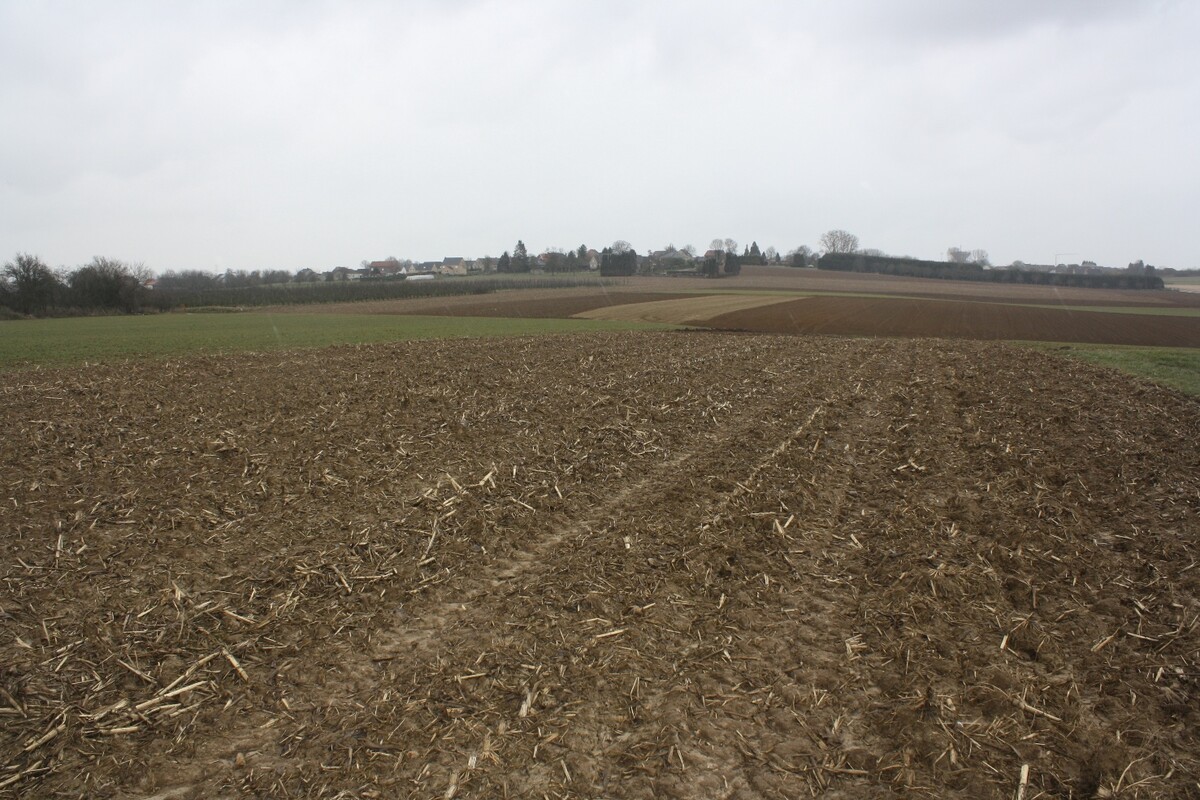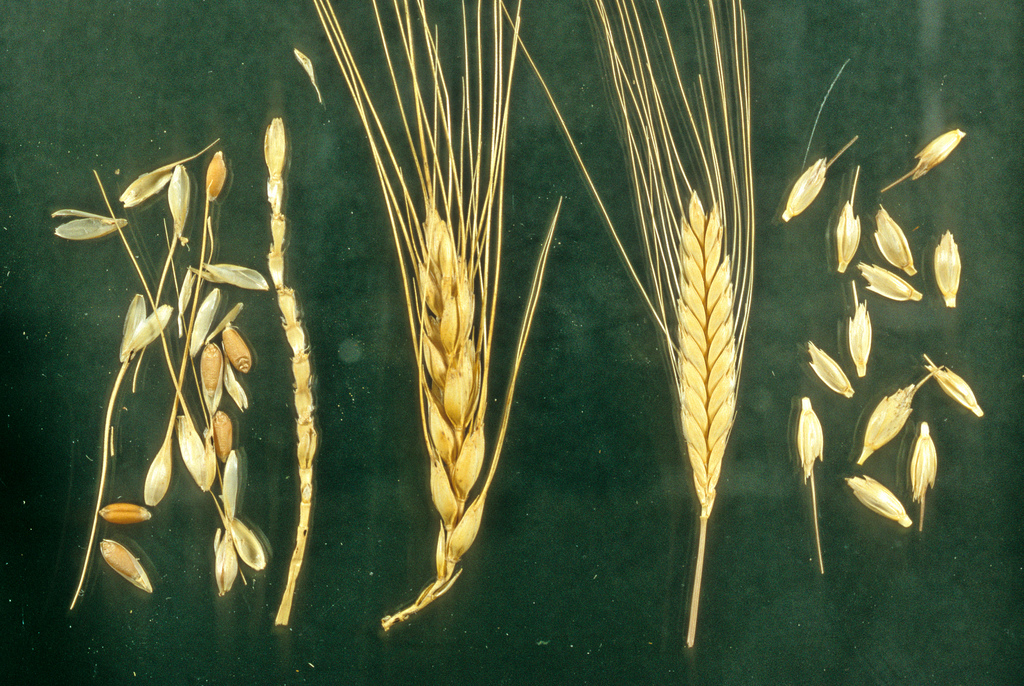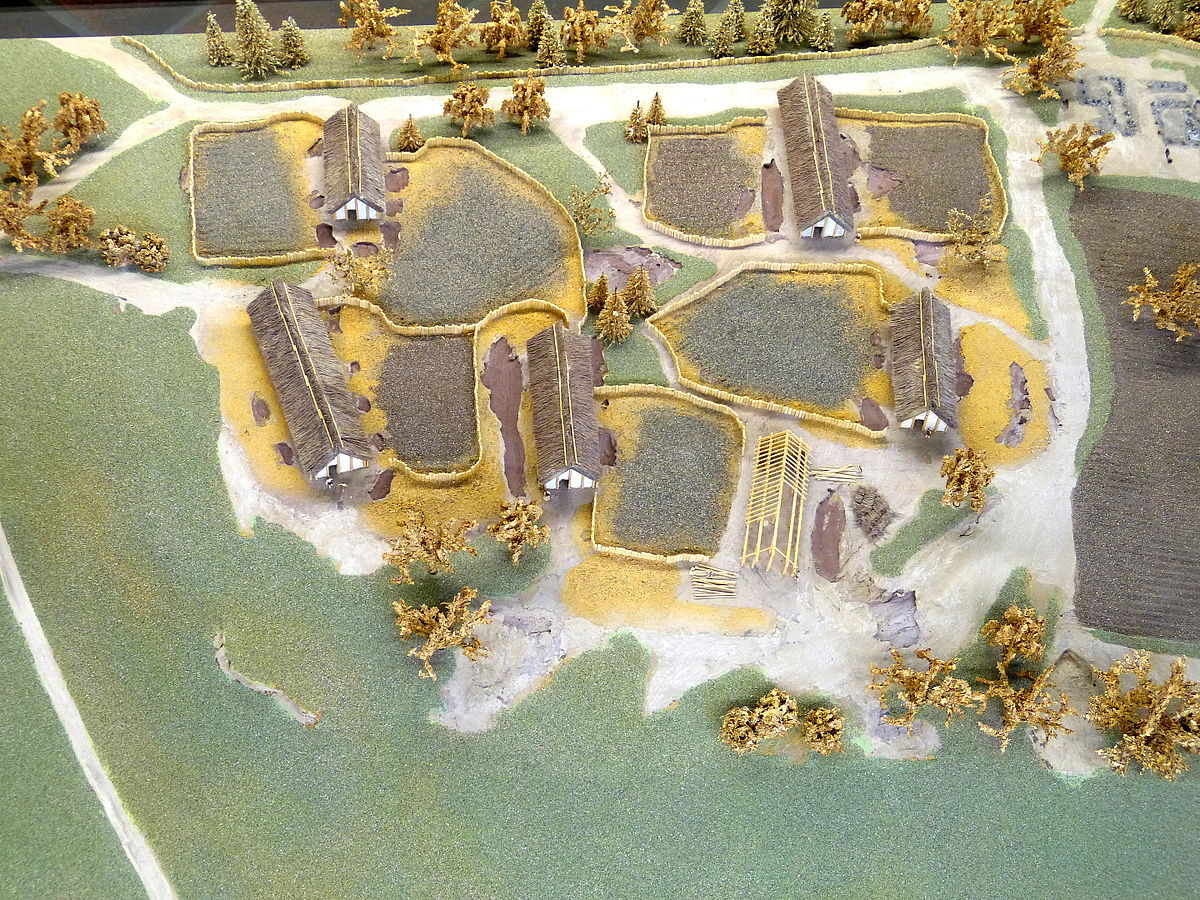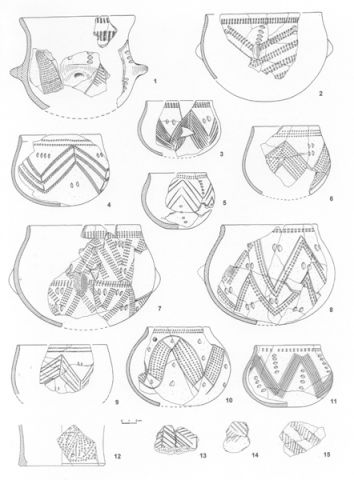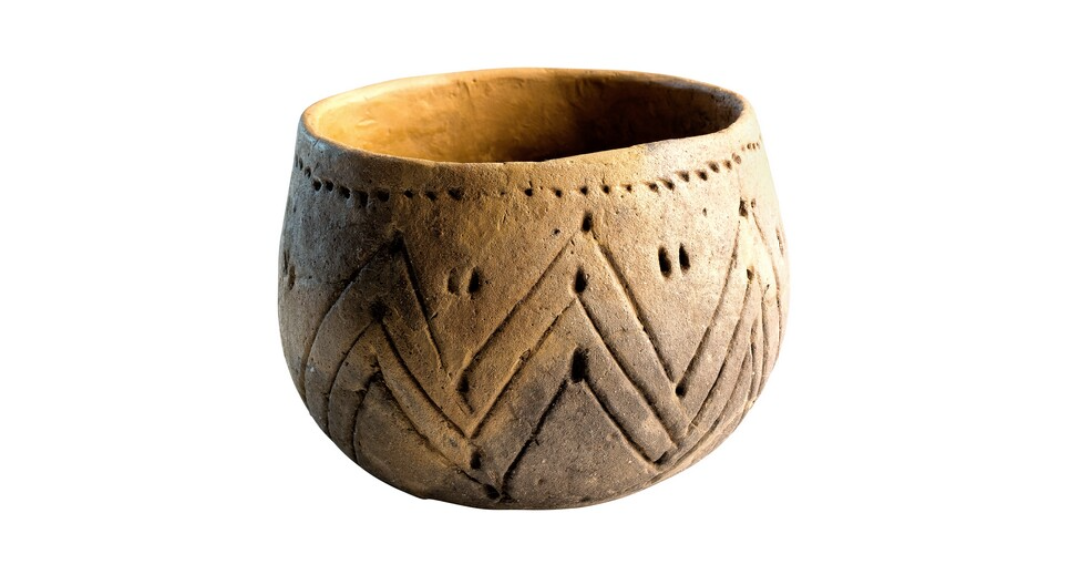
LBK pottery from Limburg used by the first farming communities, who immigrated from Eastern Europe (8 cm high, 9 cm diameter) | Tongeren, Gallo-Roman Museum, GRM 10785
The Settlement of Rosmeer
The First Farmers
The fertile Haspengouw loamy soils were a magnet for the first farmers, who originated from Eastern Europe. In Rosmeer in Limburg archaeologists discovered one of the oldest agricultural settlements in the Low Countries.
In the 1950s and 1960s archaeologists found on the Staberg in Rosmeersubdistrict of Bilzen in the south of the province of Limburg. the remains of sixteen oblong wooden houses. The dwellings turned out to be about 7,300 years old and were part of an extensive village. It was the dwelling place of the first farmers who settled in the district. They migrated from Eastern Europe to the fertile loamy soils which extended across present-day Germany, the South-East Netherlands and Central Belgium. Archaeologists dubbed those farmers the Linear Pottery Culture (Linear Bandkeramik or LBK). The name refers to the pottery that they were the first to produce and use. Those bowls were decorated with linear bands, filled with various motifs.
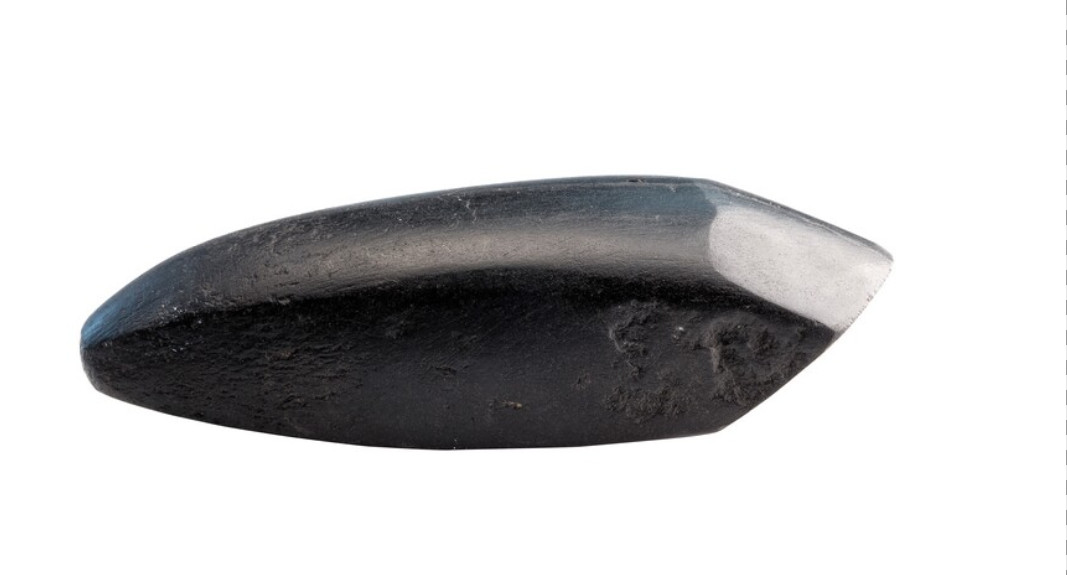
Tongeren, Gallo-Roman Museum, BH58
A stone adze, a kind of axe, found in the LBK settlement of Rosmeer.
The First Farmers
The LBK-farmers from Eastern Europe introduced a new lifestyle into North-West Europe. Instead of hunting, fishing and gathering food they started growing crops, such as lentils, peas, linseed and grain. They also kept sheep, goats, cattle and pigs. That switch to agriculture and husbandry had taken place four thousand years before in the Middle East.
The farming families no longer led the nomadic existence of the hunter-gatherers. They lived in a fixed place near their fields and animals. In addition, both their livestock and their supplies needed protection against precipitation and wild animals. The light and easily transportable constructions which the native hunters used as shelter during their migrations, were not suitable for that. Instead, the farmers built durable wooden houses and storage sheds.
The lifestyle of the immigrants did not immediately have a great impact on the hunter-gatherers who had lived there for centuries. There were, though, contacts between the two groups. That is clear from the LBK- adzesstone tools for woodworking. found in the territory of the hunter-gatherers. DNA research also showed that marriage partners were exchanged between the two communities. Gradually the local population also took the first steps towards a full-time farming existence.
Focal points
Discover more on this topic
Non fiction
De graangodin
Olympus, 2009
De barbaren: vergeten beschavingen buiten Rome en Hellas
Uitgeverij Omniboek, 2019
Steengoed, die steentijd
Kluitman, 2006. (11+)
De oudste ronde van Vlaanderen. Een archeologisch parcours
Davidsfonds Uitgeverij, 2011
Het leven van boeren die hunebedden bouwden
Van Gorcum, 2021
Ons verste verleden. Historisch denken over de prehistorische mens in de oude wereld
Universitaire Pers Leuven, 2020
Fiction
Schaduw van de leeuw
Leopold, 2018. (10+)
Zomerwoud
The House of Books, 2013. (12+)
